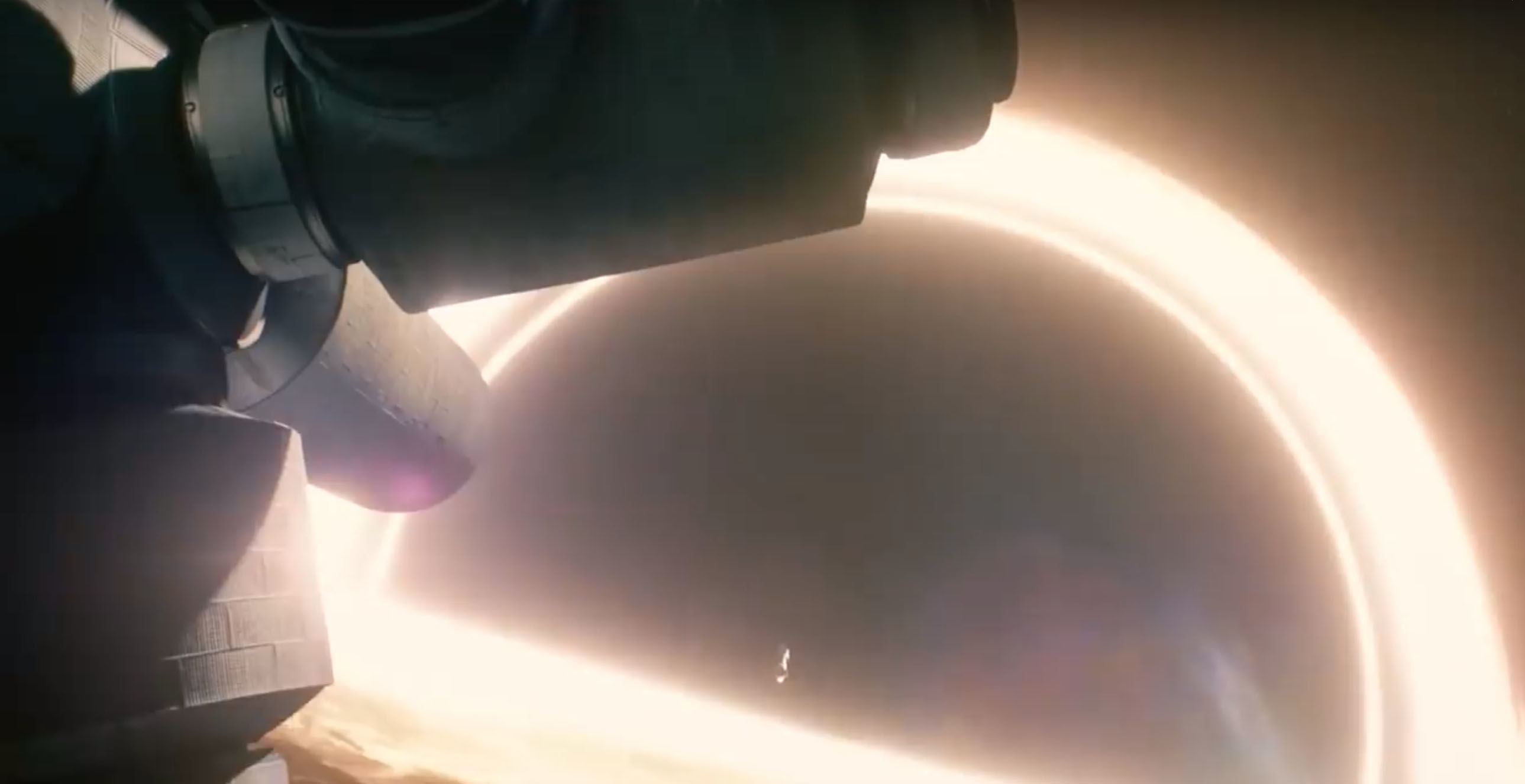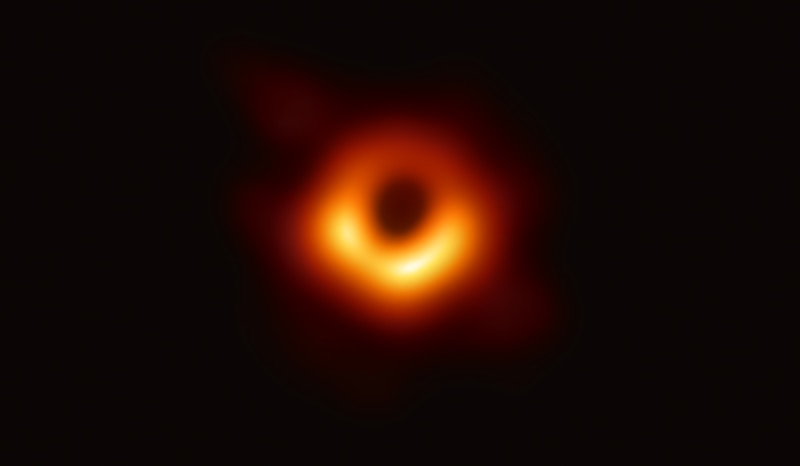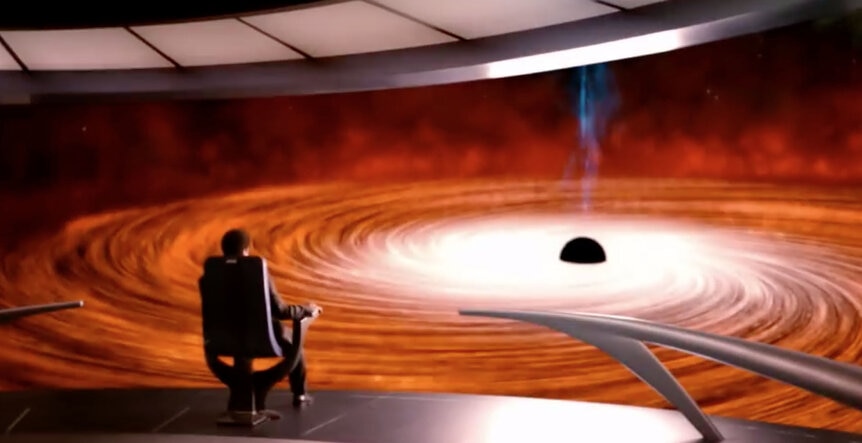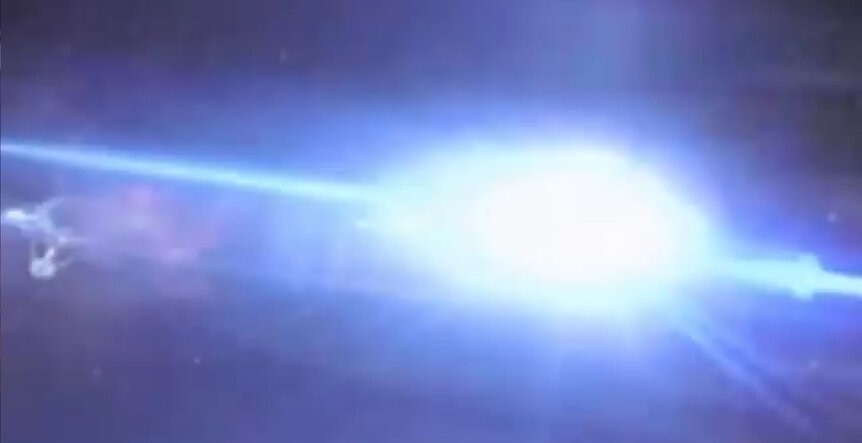Create a free profile to get unlimited access to exclusive videos, sweepstakes, and more!
Why the M87 black hole looks different from what sci-fi thought it would

Black holes have been one of the biggest cosmic mysteries to fascinate and baffle scientists — not to mention spark the imaginations of sci-fi fans and filmmakers.
When the Event Horizon Telescope revealed a groundbreaking image of the supermassive black hole lurking in the galactic core of M87 on Wednesday, Earth gasped as human eyes saw for the first time ever what the event horizon of a black hole actually looks like. However, the glowing halo surrounding a chasm of darkness may have surprised some science fiction diehards.
Even though pop culture, and sci-fi films, have had a vague understanding of stuff swirling around a point of no return from which not even light can escape, something huge has been missing.
To recap, this is the Event Horizon Telescope image:
Look closer. See how the ring of fire changes color from the top to the bottom of the circle of light surrounding the black hole? Towards the bottom, it blazes an incandescent yellow, but fades to more of a burnt orange near the top. That results from star stuff zooming around the black hole at the speed of light.
Now eyeball these You don't see it this cosmic monster in Event Horizon…
…or this one from Star Trek (2009)…
…or even Gargantua from Interstellar.
Now look at a clearer digital version of the M87 image from the Event Horizon Telescope again, manipulated to show what it should look like from every angle:
So why is the M87 image fading on the far end? Keep in mind that what you’re seeing here is not the actual black hole. The darkness in the center is an effect of the invisible black hole’s gravity, or its “shadow.” Gravity bends light from the black hole’s immense accretion disc and sends it towards the observer while leaving a gap where the black hole lurks. This is where the fade comes in.The black hole in the center of M87 spins rapidly. Something coming at you at the speed of light is going to appear brighter—that's relativistic beaming. More of its light is focused on you on the near end, so it looks brighter. It appears darker on the far end because the light on the far end is focusing away from you. This sheds light on what is missing from all those movie images. Every single one of those black holes appears to be bright all around, which is not how an observer from a spaceship would see them.
Maybe the closest that movie magic has gotten to the M87 black hole is High Life, whose director Claire Denis consulted astrophysicist and "Cosmic Companion" Aurelien Barreau to come up with something eerily close. You wouldn't want to be trapped on a spaceship hurtling into this:
According to astrophysicist Jean-Pierre Luminet, the calculation behind the first astrophysically accurate drawing of a black hole used Einstein’s theory of general relativity and “computed how the black hole’s rotation affects the shape of the shadow that the event horizon casts on light from a background star field.”
That was 1972, way before the advanced CGI we have today could produce unbelievable things onscreen. Such calculations are what NASA and other space agencies have used to show us something that would have normally been beyond the realm of visible light and therefore the range of what the human eye can see.
How could telescopes even tell they were staring a black hole in its menacing eye before the now-viral M87 image?
The presence of certain types of radiation (such as X-rays or infrared) in the right amounts is often an indicator. Unreal colors are just used to make the entire phenomenon easier to see and process for the rest of us. So was extra light in the case of Interstellar. The visual effects team warped the original relativistic calculation that was supposed to generate an accurate image of a black hole, but it was brightened all around because of the conclusion that audiences wouldn’t really get what was going on. Christopher Nolan is also kind of obsessed with lens flare.
Whether or not the Event Horizon Telescope’s image was what you expected, you can’t deny that it’s just as mesmerizing as everything the human brain has imagined up until now.





























